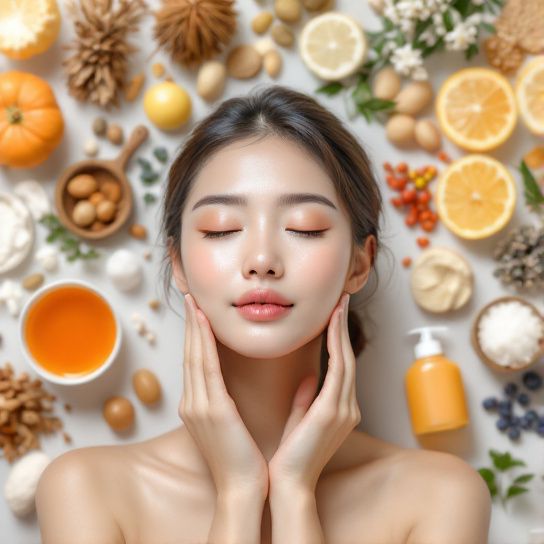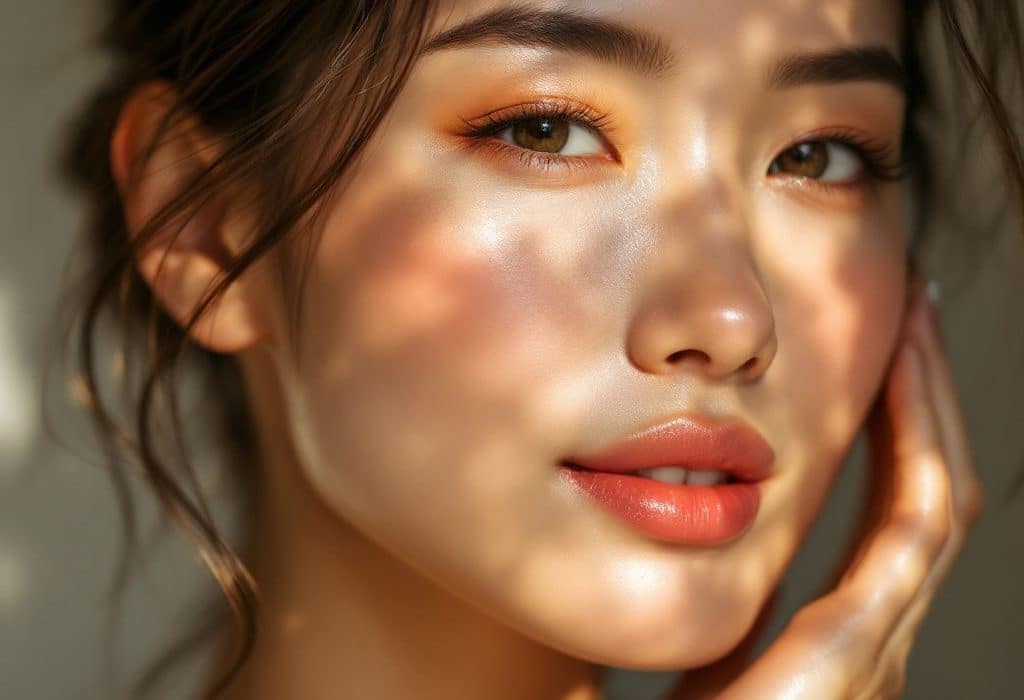Hey there! So, you’ve landed here because you’re curious about how to layer Asian ingredients into your beauty routine, right? I totally get it. Asian beauty, especially Korean skincare (hello, K-Beauty fans!), has been rocking our worlds for a while now. There’s something about those glass-like skins that just grabs our attention. But here’s the deal: it’s all about layering – not just slapping products on willy-nilly. Stick with me, and I’ll show you how to create that seamless beauty routine using Asian ingredients that’ll have you glowing in no time.
Why Layering Matters
Okay, think of layering skincare as making a delightful ramen bowl. Yep, ramen. If you just throw noodles, broth, and toppings together without any order, you’d probably end up with a pretty unmemorable meal. But layer them thoughtfully? Totally different story. Each step enhances the next, making the final result waaaay more delicious.
Same goes for your beauty skincare routine. When done right, layering ingredients ensures each product penetrates your skin properly, making the whole process more effective. Your skin ends up not only hydrated but more resilient and radiant. That’s the goal, right?
Getting Started: Know Your Ingredients
Here’s where things get interesting – and a little bit geeky. Asian ingredients are known for their lightweight formulations and amazing efficacy. Trust me on this one; they’re like hidden gems in the skincare world. Here are some to consider adding to your arsenal:
Essential Asian Ingredients and Their Benefits
- Green Tea: Leaps beyond a calming cup itself; it’s packed with antioxidants, perfect for reducing inflammation and protecting your skin from free radicals.
- Fermented Ingredients: Ever tried fermented foods like kimchi, packed with probiotics? Well, when it comes to skincare, fermented rice water and similar ingredients boost hydration and help brighten the skin.
- Ginseng: A staple in traditional Asian medicine; it’s an anti-aging powerhouse. It smooths those fine lines and imparts an enviable glow.
- Rice Bran: Renowned for its nourishing effects, it soothes sensitive skin and works wonders in evening out uneven complexion.
- 5. **Snail Mucin: I know, it sounds weird, but hear me out! It’s incredibly effective in repairing and hydrating skin, and no, it doesn’t feel gross. Promise.
- 6. **Centella Asiatica: Often referred to as “cica,” this little herb is fantastic for calming irritated, sensitive skin and promotes healing.
Understanding these key players helps you make informed choices, especially when combining effects to target specific skin issues, like redness or dullness.

The Routine: Step-by-Step Layering Process
Here’s the juicy part, peeps. Let’s get down to how to layer these goodies into your routine in a way that isn’t just guessing.
Step 1: Prepping Your Skin
Think of this step as priming a canvas!
- Cleanse: Start with a gentle, hydrating cleanser that includes something familiar like rice or bamboo extracts. Double cleansing is a Korean must-do! Use an oil-based cleanser followed by a foaming one for the magic to begin.
- Tone: A hydrating toner is essential, helping pH levels stay balanced and preparing your skin for what’s next. You might spy on a toner showcasing bits of green tea or mugwort here. Dab this on with clean hands or a cotton pad.
Step 2: Essential Serums and Ampoules

These gems target specific concerns—think fermentation popping up here:
- Essence: Yup, Korean beauty is big on these watered-down powerhouse products. They’re full of fermented ingredients such as rice extract. Pat it in gently and feel luxurious.
- Serum: Engage something like a snail mucin-infused serum to rebuild and hydrate. Or grab a vitamin C option to enhance glow with that tackling-annoyance service of dark spots.
Step 3: Moisturize and Heal
Never underestimate the role of a good cream:
- Moisturizer: Lock that helluva hydration in. Aim for formulas that easily absorb on the layering of ingredients you’ve pampered your skin with already. Dab on rice bran oil-based creams or a dash of ceramide-centric rich cream.
- Soothing Options: If redness exists, don’t shy away from giving cica creams more spotlight. It’s just like adding a touch pond lily to your painting. Calming and fostering even texture.
Step 4: Sun Protection (Daytime Only!)
Don’t forget:
- Sunscreen: This finale piece is non-negotiable. Choose a sunscreen that’s lightweight but powerful—try one with additional anti-pollution features, enveloping the skin with protection like silk.
Building Trust with Repetition

I know this is a lot—like putting together an exquisite jigsaw puzzle. Let’s lay down some core concepts again just because they’re crucial: It’s all about strengths of Asian ingredients, the synergy of fermentation effects, and fostering skin resilience through delicate but meaningful layers. Simply repeat the process to uncover a routine where your skin shines.
Stay the Course: Consistency is Key
Real talk. Using Asian ingredients and mastering the art of layering demands a degree of patience and consistency. Results? Yeah, those ridiculously beautiful results, they come from staying loyal to your routine even when instant glow hooks its finger-twisting you for impatience.
Avoiding Common Mishaps
Ah, the detours to avoid! Layering isn’t devoid of pitfalls, but here’s how you stay on course:
- Too Many Products: More isn’t always merrier. Layering should be strategic. Identify your skin’s specific needs and start with fewer products. Add more as your skin tells you it’s ready to entertain additional visitors.
- Skipping Steps: It can be tempting if time’s short…but it’s also a straight road to skin woes. Cleanse thoroughly before applying toners or skipping essence. Every step has a job – let them do it!
- Incompatible Combinations: Some ingredients might not play friend. Keep track of what works and run patch tests when bringing new formulas into the mix.
Wrapping Up with a Friendly Pep Talk
Listen, there’s no one-size-fits-all blueprint for layering Asian ingredients into a beauty routine. Exploring what vibes best with your unique skin–such personal sparkle emerges! Cultural beauty treasures these inclusive, abundant resources to care, protect and give oneself a pampering lifestyle.
This is supposed to be an enjoyable exploration—a skincare journey, if you will. Don’t sweat the small stuff. Instead, focus on those awe-inspiring transformations Asian ingredients deliver over time. Are we done? Nah. Keep learning, adjusting and, most importantly, embracing the moments your skin subtly whispers its healthy, hydrated vibe to you. You’ve got this – trust yourself!
Frequently Asked Questions
What are the essential Asian ingredients that I should have in my pantry?
Essential Asian ingredients include soy sauce, fish sauce, miso paste, rice vinegar, chili garlic sauce, Sriracha, toasted sesame oil, and fresh ginger. Other crucial items are jasmine rice, various types of noodles (like soba, udon, and rice noodles), cilantro, limes, and kimchi. These ingredients are fundamental for preparing a wide range of Asian dishes[1][2][5).
How do I choose the right type of soy sauce for Asian cooking?
When choosing soy sauce, opt for an all-purpose or regular soy sauce, often labeled as “light soy sauce” but not light in sodium. Brands like Kikkoman are widely available and work well for most recipes. Ensure you select a soy sauce that is not low in sodium unless specified otherwise[2).
What is the difference between white miso and red miso, and how are they used?
White miso (Shiro miso) is milder, sweeter, and lower in salt compared to red miso. It is ideal for soups, dressings, marinades, and light sauces. Red miso has a stronger, saltier flavor and is often used in heartier dishes. There is also a yellow miso, which is a combination of white and red miso[1][2]).
Where can I find Asian ingredients if they are not available in local grocery stores?
If Asian ingredients are not available in local grocery stores, consider visiting a specialist Asian market in your neighborhood for better prices and variety. Alternatively, you can purchase these ingredients online from various retailers[1]).
References- Nerds with Knives. (n.d.). Asian Pantry Basics.
- Seonkyoung Longest. (2020). 10 BASIC Ingredients Every Kitchen MUST Have for Asian Cooking.
- Andrea Nguyen. (2023). My Asian Ingredient Superheroes + Ingredient Cheat Sheet.



